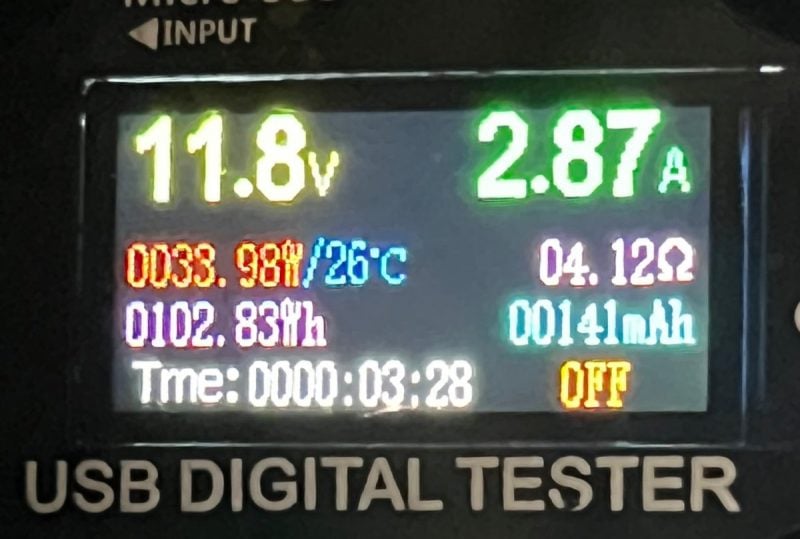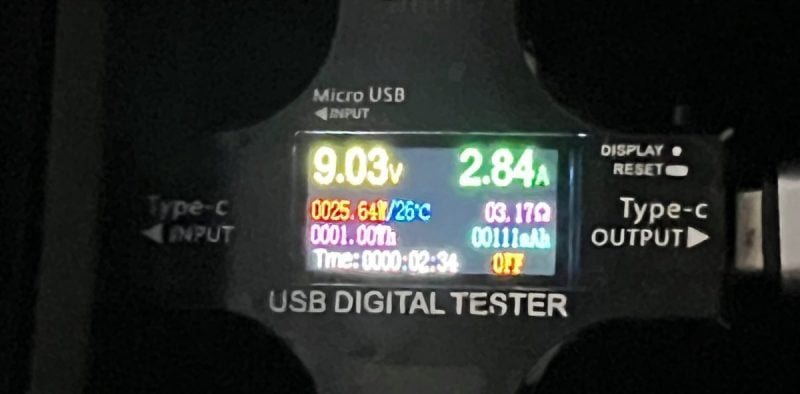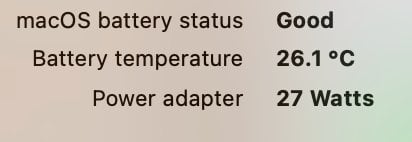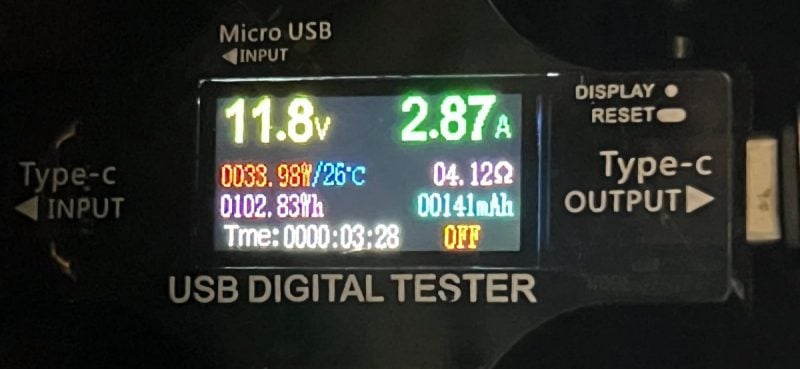The latest Model 3 and Y Teslas come with two Type-C charging ports in the front and two more for rear passengers. We just took delivery of the newest Model Y out of Fremont (September 2022 build), and wanted to find out if USB Power Delivery is supported and how much wattage comes out of these outlets.
We’re using a physical USB power detector tool that measures voltage and amperage to confirm power in watts, as well as looking at what a Macbook is reporting and what it thinks the charger is capable of.
Front Ports
Plugging in a 15-inch Macbook Pro as a load into the front console ports, we recorded a maximum of 33 watts (11.8V x2.87A) delivered. This is enough to power most modern laptops, and even charge slowly if not doing intensive tasks. No 12V inverter is needed to run laptops! The coconutBattery app on the Macbook also recognized the source as a 36-watt power adapter.


Rear Ports
However, the rear Type-C USB ports appear to max out at only 9 volts. The maximum we were able to draw from the rear ports was 25.6 watts (9.03V x 2.84A). The computer also reported a 27-watt power source plugged in. This is still plenty for even the thirstiest mobile devices, but laptops and anything larger are better served at the front.
What about the other in-cabin power options? We know from Tesla documentation that the wireless Qi phone chargers can supply up to 15 watts, and the 12V sockets are capable of 12A.
Do These Power Accessories Reduce EV Driving Range?
You are not likely to see a noticeable reduction in range. When driving on the highway, the car is consuming somewhere in the area of 25 kWh every hour. That is 25,000 Watt-hours. Even if your passengers are consuming 60 Watts during that hour, it is only a 0.24% energy consumption increase.



